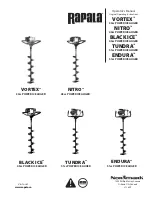
NI 5421/5441 Calibration Procedure
|
© National Instruments
|
11
13. Measure the frequency output of the NI 5421/5441.
A frequency error of 45 Hz for a 10 MHz signal corresponds to an error of 4.5 ppm. This
limit accounts for the initial accuracy and the frequency deviation caused by temperature
and aging. Refer to Table 3 for frequency ranges.
14. Call
niFgen_AbortGeneration
(niFgen Abort Generation VI) to abort the waveform
generation using the following parameter:
•
vi
: The session handle returned from
niFgen_init
15. Call
niFgen_close
(niFgen Close VI) to close the instrument driver session, to destroy
the instrument driver session and all of its properties, and to release any memory resources
NI-FGEN uses. Use the following parameter:
•
vi
: The session handle returned from
niFgen_init
Verifying the DC Gain and Offset Accuracy
This test verifies the DC gain and offset accuracy of the NI 5421/5441 into a high-impedance
load by generating a number of DC voltages and offsets, measuring the voltage with a DMM,
and comparing the NI 5421/5441 to the error limits.
The DC gain and offset accuracy verification procedure has three subprocedures that verify the
following specifications:
•
Main analog path gain
•
Main analog path offset
•
Direct analog path gain
Verifying the Main Analog Path Gain
Complete the following steps to verify the NI 5421/5441 main analog path gain.
1.
Connect the NI 5421/5441 CH 0 front panel connector to the DMM.
2.
Call
niFgen_init
(niFgen Initialize VI) using the following parameters:
•
resourceName
: The name of the device that you want to verify. You can find this
name under Devices and Interfaces in MAX.
•
IDQuery
:
VI_TRUE
•
resetDevice
:
VI_TRUE
•
vi
: A pointer to a ViSession. The variable passed by reference through this parameter
receives the value that identifies the session created by this function. This value acts
as the session handle and is passed as the first parameter to all subsequent NI-FGEN
functions.
Table 3.
Calibration Limits for Frequency Accuracy
Frequency Limit
As-Found Limits
As-Left Limits
Low
9,999,750 Hz
9,999,955 Hz
High
10,000,250 Hz
10,000,045 Hz












































